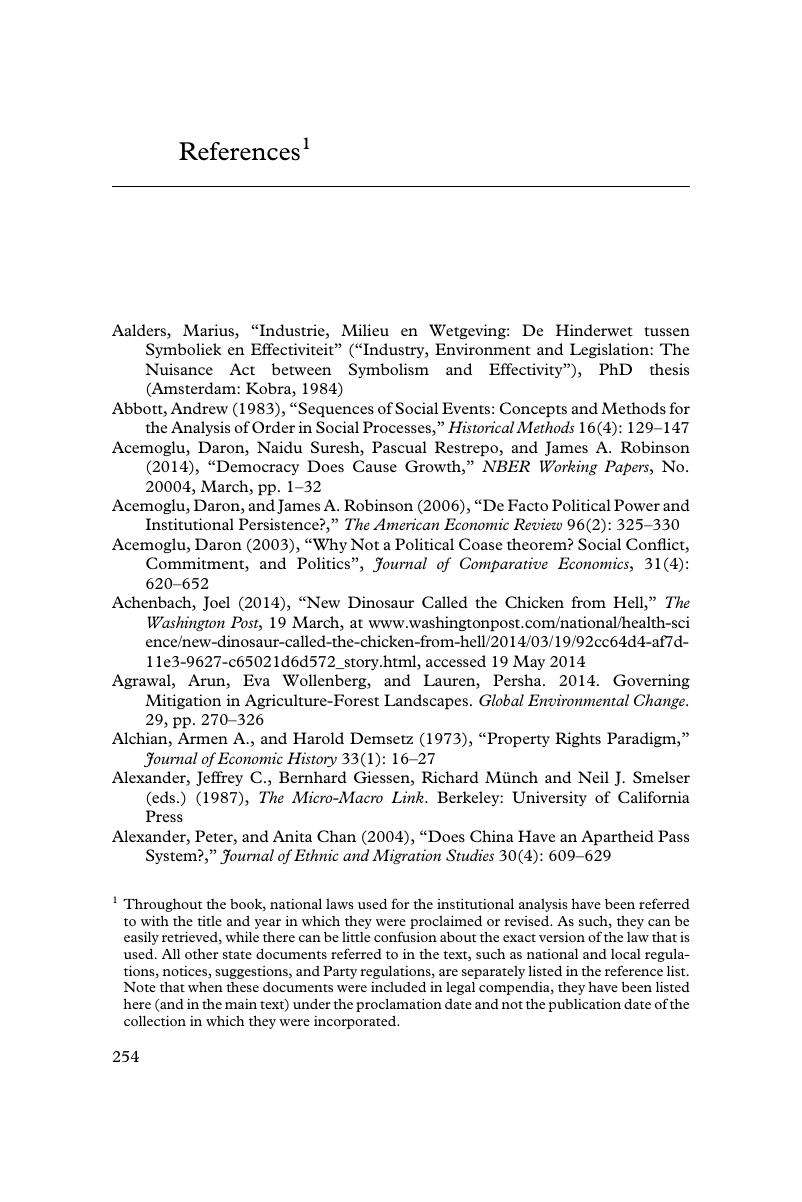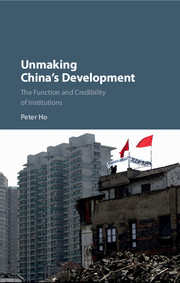Book contents
- Unmaking China’s DevelopmentThe Function and Credibility of Institutions
- Advance Praise for Unmaking China’s Development: The Function and Credibility of Institutions
- Unmaking China’s Development
- Copyright page
- Dedication
- Contents
- Figures
- Tables
- Boxes
- Foreword
- Acknowledgments
- Introduction: An Archaeology of Institutions
- 1 Institutional Change in China’s Development: Myths of Tenure Security and Titling
- 2 In Defense of Endogenous Development: Urban and Rural Land Markets
- 3 The “Credibility Thesis” and Its Application to Property Rights
- 4 A Theorem on Dynamic Disequilibrium: Debunking Path Dependence and Equilibrium
- 5 Understanding Informality and Insecurity: Empiricism as Basis for Institutionalism
- 6 Making and Unmaking the Property Bubble: Boom, Bust, and Unintended Welfare
- 7 Empty Institutions, Non-Credibility, and Power: The Grazing Ban and Mining
- Conclusion: Theoretical Implications for Capital, Labor, and Beyond
- Appendix: Results of the Logistic Regression Analysis
- References1
- Index
- References
References1
Published online by Cambridge University Press: 13 October 2017
- Unmaking China’s DevelopmentThe Function and Credibility of Institutions
- Advance Praise for Unmaking China’s Development: The Function and Credibility of Institutions
- Unmaking China’s Development
- Copyright page
- Dedication
- Contents
- Figures
- Tables
- Boxes
- Foreword
- Acknowledgments
- Introduction: An Archaeology of Institutions
- 1 Institutional Change in China’s Development: Myths of Tenure Security and Titling
- 2 In Defense of Endogenous Development: Urban and Rural Land Markets
- 3 The “Credibility Thesis” and Its Application to Property Rights
- 4 A Theorem on Dynamic Disequilibrium: Debunking Path Dependence and Equilibrium
- 5 Understanding Informality and Insecurity: Empiricism as Basis for Institutionalism
- 6 Making and Unmaking the Property Bubble: Boom, Bust, and Unintended Welfare
- 7 Empty Institutions, Non-Credibility, and Power: The Grazing Ban and Mining
- Conclusion: Theoretical Implications for Capital, Labor, and Beyond
- Appendix: Results of the Logistic Regression Analysis
- References1
- Index
- References
Summary

- Type
- Chapter
- Information
- Unmaking China's DevelopmentThe Function and Credibility of Institutions, pp. 253Publisher: Cambridge University PressPrint publication year: 2017



